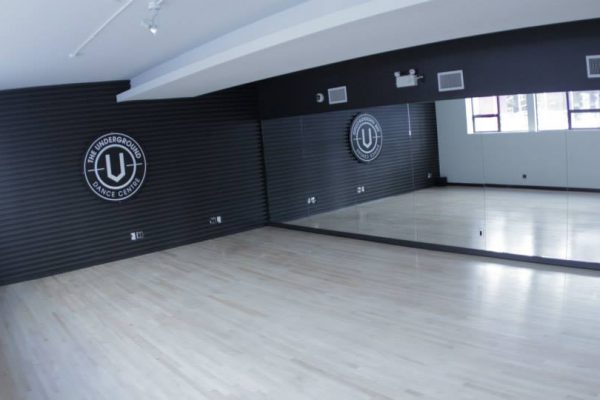Editor’s Note: Choreographer Antony Hamilton’s Natural Orders appeared in Toronto during Dancemakers Minifest 2017 on June 23 and 24. Hamilton continues as Resident Artist at Dancemakers for the 2017/2018 season and will present new work in June 2018. This essay connects back, as curiosity and creation move forward on many fronts at Dancemakers.
Natural Orders ends with a cluster of small light-sensitive mechanisms gliding about a section of the stage. While from a distance they appear mostly as points of luminescence, they look, up close, a bit like rubber toothbrush heads or many-legged critters.
“Should we make a constellation?”
“That idea feels misguided. Our audience might think we are alluding to astrology. It’s an immensely popular topic for discussion: a field of recombining Sun/Moon/Ascending signs, too clearly marked by contemporary social habits.”
“Is it though?”
“It doesn’t work for our purposes.”
“What other shapes can a bunch of glowy bugs make? The whole star analogy is just so immediate. Bright spots in the dark. Visual metaphor rests very comfortably in the eyes of onlookers.”
The glowy bugs might be onto something. A list of some weird images I saw in Natural Orders:
• Something like sea kelp, growing horizontally, moving with currents.
• Maybe not sea kelp. Rather, leafy seadragon/Glauert’s seadragon/Phycodurus eques. How do these bodies interact with their material environments? “Leafy seadragons spent more time over Posidonia seagrass and less over Amphibolis than expected based simply on the area of habitat available. This might result directly from habitat selection by leafy seadragons or indirectly from fish positioning themselves in response to other factors such as water movement or prey abundance” (R.M. Connolly, A. J. Melville, and K. M Preston, “Patterns of Movement and Habitat Use by Leafy Seadragons Tracked Ultrasonically”).
• A figure with the mannerisms of a cartoon duck pushing a very flat shopping cart.
• Youthful characters pretending to be superheros, on platforms with wheels.
• Human arms, mimicking machine arms, mimicking amusement park rides and/or oil derricks.
The imagined conversation above takes place in a precarious moment, a precarious ecology. Only little toothbrush-head bugs are likely to survive the impending environmental collapse.
The glowy bugs respond to light. (As long as the sun doesn’t go out, they could be ok?) From what I, as an amateur chronicler, understand, increases or decreases in the amount of light reaching these bodies determines the speed at which they move. In a sense, light is to the glowy bugs, what water movement or prey abundance are to the leafy seadragon.
The bugs wonder, how do our bodies move?
“Do we collide?”
“Have we ever collided?”
“Once I crawled all the way to a keynote by philosopher Erin Manning and she commented on people’s remarkable tendency not to run into each other in the subway. A sort of tacit choreography of bodies emerges in this space, where pathways, for the most part, bring bodies into proximity without contact.”
“Tacit choreography – is this how we move, swanning about the floor, making little patterns as long as light reaches us.”
“It might be tacit until the music plays – a serenade hits the air to denote our movement, probably ironically, as a matter of grace.”
The choreography of the bugs is almost epiphenomenal. Degrees of light cause degrees of movement, but the arrangement of this movement, how it renders itself aesthetically to us looking on, seems a secondary function. It is something immanent, and yet, also an aside.
In the many vignettes that precede the ballet of the mechanical bugs, however, the choreographic circulates with precision: it appears cultivated through exactitude, intention and attention. The beginning of the piece features the four dancers – Michael Caldwell, Tia Kushniruk, Jolyane Langlois, Sahara Morimoto – moving with a number of benches and rolling platforms. The interactions between performing bodies and performing objects unfold through logics closer to a game of Tetris, or even a section of a Rube Goldberg device, than to a walk through the subway. Bodies glide to fit precisely through the negative space between bench legs. Arms push legs, which pivot a torso, until a shoulder makes contact with another bench, rotating the whole.
“Hey pals, look at this cool website I found,” a glowy robo-bug on a teeny tiny laptop calls out.
Her bug pals scamper over to see, and as they crowd around the screen they let out a chorus of ooohs and ahhhs that no one else can hear and that maybe don’t actually exist.
There is a photo of Oreos stacked inside a Mentos six-pack tube, the edges of the cookies reaching exactly to the walls of the container – a perfect, if improbable, fit.
The text at the top of the page reads things fitting perfectly into other things.
The bugs scroll down the page. Another photo shows an oven knob perfectly replacing the control dial of a vehicle’s air conditioning. A video farther down the page shows a propane tank sliding smoothly into the perfectly sized opening of a protein powder jug.
“Watch the dancers. They count, move, sequence. Counting generates patterns, like overlapping gestural grids. They fit perfectly together. Numbers fitting perfectly into numbers, scores fitting perfectly into scores. They could be on this blog.
There is an almost unnamable satisfaction to be found in things fitting perfectly into other things. Two testimonials at the top of the page try to put the feeling into words:
“Seeing totally unrelated objects perfectly nestle inside of each other provides a certain kind of peace in an otherwise chaotic world.” — digg.com
“It’s the relief of finding ease where you expected struggle.” — The Atlantic
Two thoughts arise. First, it’s interesting to note that the blog has not been updated since 2015. It seems that if a pack of gum resting snugly in a car cassette player could bring ease to the troubled minds of 2015, such things may no longer offer a strong enough salve. Either that or this particular Internet trend has simply run its course.
Second is the relationship between ease and struggle, which tends to be at the centre of much discourse surrounding virtuosity in dance. Indeed, Natural Orders easily assumes the designation, “virtuosic”: the dancers move with exactness and athleticism. Seamless interactions among performers and objects are interspersed with sections of rigorous movement requiring faultless timing and unfaltering stamina. What might colloquially be referred to as the piece’s counting section – when the dancers cycle through gestural sequences while marking counts with multi-lingual numbers and other utterances – invokes the thrill of watching a legibly challenging task, masterfully executed. And yet, when discussions of the virtuosic arise, I always find myself returning to scholar Judith Hamera’s words: virtuosity “is not a state or a quality of individual bodies.” Rather, it emerges in between bodies, through invested gazes, spectatorial attachments, our collective artistic expectations.
Interestingly, many of the other keywords that circulate around Hamilton’s work operate similarly. Hamilton writes that Natural Orders questions “notions of the natural and the artificial.” The piece incorporates the animate and the inanimate, juxtaposing movement and mimicry, as they oscillate between body and built environment.
In many ways, each of these terms is predicated on the spectator’s presence, assumptions and understandings. Even the choreographic departure point for Hamilton’s work cited in co-presenter Luminato’s online program notes – “you can’t do the robot unless you’ve seen the robot” – relies on spectatorship as an active, indeed central, component of understanding how movement, how dance, happens. Of course, if all this relies on our eyes, it’s no wonder that Hamilton’s mission to democratize humans and objects results in self-admitted failure.
Even so, the endeavour of this impossible project is valuable, not least of all for the arresting dancing images we encounter along the way.
“We don’t talk like that. Glowy bugs like us never have.”
“He has no idea what he’s talking about.”
Tagged: Contemporary, Dance WiRe (Writers in Residence), Performance, ON , Toronto





